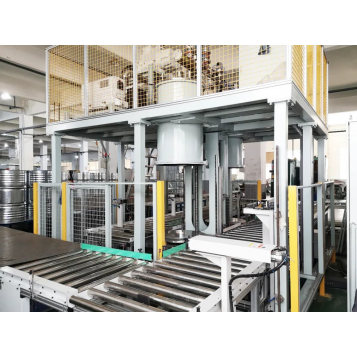There are different high frequency sound sources that these ultrasound instruments detect. For the detection of compressed air and compressed gas leaks, the ultrasound source is turbulence. Once the ultrasonic instrument to be used for compressed air leak detection has been selected, planning for the compressed air inspection can begin. It should be noted that the high frequency sound has very little energy when looking for the flow of compressed air in the installation. Due to its low energy, the sound will not pass through hard surfaces, but will bounce and reflect. That is why it is important to scan in all directions with the ultrasound instrument
and adjust the sensitivity of the instrument. The sensitivity adjustment and scanning in all directions help to locate the compressed air leak. Once the general area of compressed air flow has been found, most ultrasound instruments are equipped with a focusing probe that can be slid onto the bottom of the upper scanning module to narrow it down. the field of view and indicate the location more precisely. . This method of detecting compressed air leaks
Ultrasound is commonly called the "coarse to fine" method.
Now the logistics of the Automatic Compressor Helium Leak Test System must be considered. A pre-inspection visit is strongly recommended. The inspector must take the opportunity to determine the specific areas or sectors where compressed air is used. Compressed air piping plans are also a useful resource during the initial visit.
"Because of that, you need someone else to make a big initial investment, if it's about developing a large natural gas field, building an LNG plant, which can be multi-billion dollar investments."
If they do, and there is enough helium in the gas, then someone could invest $50 million to $100 million to build a helium plant "at the end of it," Kornbluth said.
"The slow response to the shortage is because that response actually requires someone from another sector to intervene first."
The frequency and severity of recent shortages have prompted several companies, including a handful in Canada, to begin drilling specifically for helium in fields that do not produce hydrocarbons. But these producers represent only 3% of the global supply. As Woolridge later discovered, setting up the MRI involves cooling the machine's giant magnet by boiling liquid helium. This vaporized helium is usually pumped out of the facility through a vent, but this vent is leaking the helium into the rest of the facility. In total, about 120 liters of helium (or about 90,000 cubic meters in the gaseous state) were pumped out of the MRI room, and an untold amount leaked into the rest of the hospital.
Woolridge himself conducted some tests to see if Helium Leak Detection Equipments for Automobile could turn off an iPhone. He placed an iPhone 8+ in a sealed bag and added helium. In a video of the test, Woolridge runs a stopwatch app on the phone. The timer gets faster and faster as the video continues before the iPhone freezes after about eight minutes. Helium was apparently ruining the iPhone's clock.
Contrary to what some may think, compressed air is not cheap. In fact, considering the energy required to produce it and what results from it, it is often considered the most expensive tool in a typical manufacturing plant. Compounding the problem, the US DOE notes that more than 50% of all compressed air systems have energy efficiency problems. Air compressor experts also estimate that up to 30% of the compressed air generated is lost due to leaks in the compressed air system.




